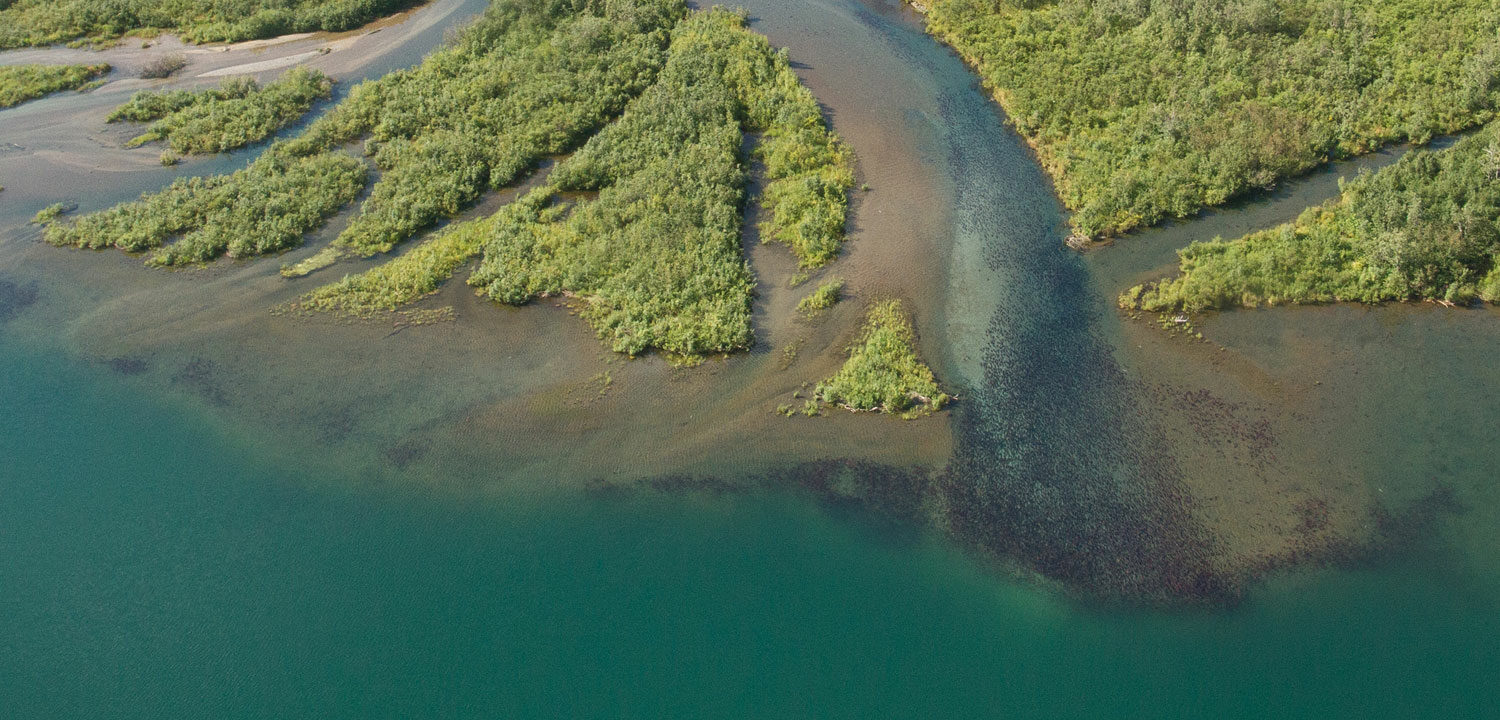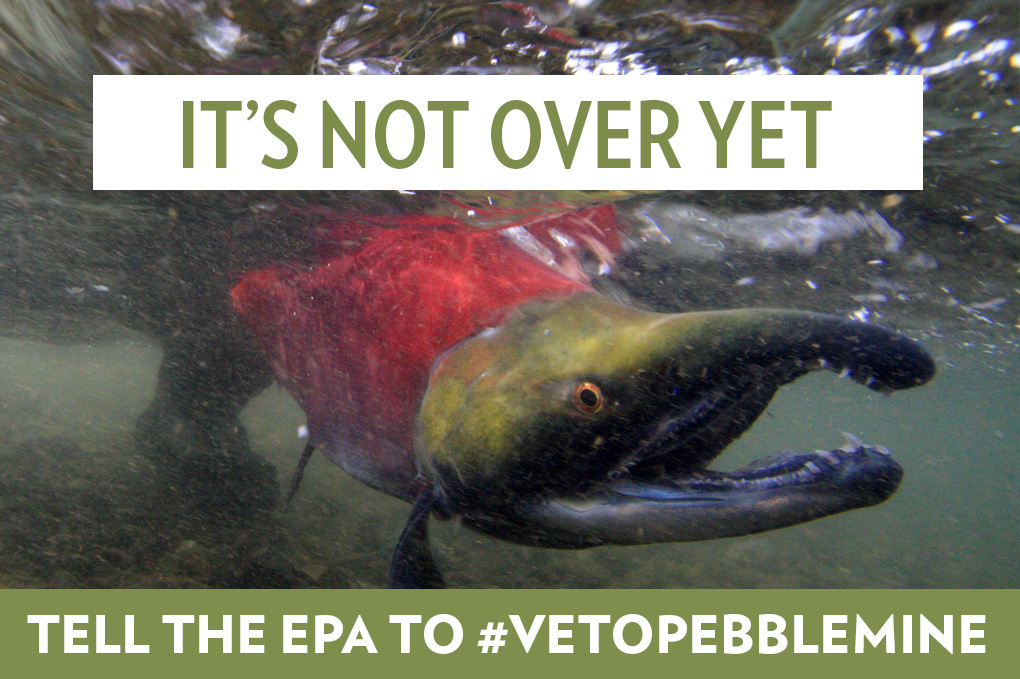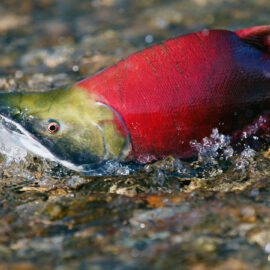Q&A with Wild Salmon Center’s Alaska Director Emily Anderson.
On Monday, August 24, the U.S. Army Corps delayed the Pebble Mine project slated for the headwaters of Bristol Bay, Alaska.
The agency recognized that the Pebble Mine will cause “significant degradation” to Bristol Bay and determined that the mine’s application could not be permitted without a better plan to compensate for the loss and destruction of thousands of acres of wetlands and 184 miles of salmon streams. Pebble Limited Partnership has 90 days to come up with a new plan.
This delay is a significant, hopeful step in the drive to stop Pebble Mine, and one we couldn’t have imagined just four weeks ago when the Army Corps issued a final environmental impact statement. What followed the July 24 release was more than 35,000 letters of opposition sent from Wild Salmon Center supporters to Congress and the Environmental Protection Agency. Outdoor recreation, fishing, and conservation partners amplified the message that this was the final opportunity to stop Pebble. And heavy news coverage tracked a wave of opposition from prominent figures all across the political spectrum who spoke out against Pebble.
The opposition clearly registered in Washington. After the delay by Army Corps, both of Alaska’s sitting Senators said they agreed with the decision to delay, and other key members of Congress went further to say it was time to stop the mine once and for all.
The focus now turns to what comes next. The United Tribes of Bristol Bay, the collection of 15 Alaska Native Tribes that has been leading the fight to stop Pebble for more than a decade, called for the EPA to step in and veto the project.
“It is impossible for Pebble to mitigate the devastation this mine will have on our Native cultures and our watershed,” said Alannah Hurley, executive director of the United Tribes of Bristol Bay. “Pebble should not move forward in this process and should not be built. It is time for the Environmental Protection Agency to step in and veto this project using its Clean Water Act authority.”
How do we support the Tribes’ call to action? We asked WSC Alaska Director and attorney Emily Anderson to break down exactly what happened this week and what comes next.
How did we go from the Army Corps on the verge of permitting this mine on July 24 to a significant delay in just four weeks?

Emily Anderson: The Army Corps has a set of guidelines it must follow prior to issuing a final Clean Water Act permit. In doing so, the Army Corps must make a finding about whether a proposed project will cause “significant degradation” to the environment. It’s pretty hard to argue that a project that destroys thousands of acres of wetlands and more than 184 miles of streams in an otherwise pristine area doesn’t cause significant degradation.
What is the Army Corps’ decision on the mine at this point?
Anderson: The Army Corps’ letter to Pebble Limited Partnership (PLP) delays the final decision on whether to issue a Clean Water Act permit for the Pebble Mine project. The Army Corps requested more information from PLP about how it plans to offset the damage caused by the mine.
Can the effects of this giant toxic mine really be offset in any meaningful way?
Anderson: No, but unfortunately the law allows developers to propose mitigation options to conserve other land or make a payment in exchange for destroying an area. In this case, the headwaters of Bristol Bay are absolutely pristine and there would be no threat to any of the land if not for the Pebble Mine. The idea of conserving land adjacent to the Pebble project in exchange for the destruction Pebble will cause to wetlands and salmon streams should be rejected.
What are the company’s and the Corps’ options now?
Anderson: The company must submit a new mitigation plan sometime between now and the end of November. The Corps will evaluate that plan and eventually issue a Record of Decision and choose to approve or deny the permit.
What’s our best policy outcome to stop this mine once and for all?
Anderson: We have always agreed with the Tribes’ and many other allies that the best way to stop the Pebble Mine is for the EPA to step in and veto the project regardless of what Army Corps chooses to do. Under the Clean Water Act, the EPA has the authority to prohibit or restrict the use of an area as a disposal site for mine waste and fill material if it will have unacceptable adverse effects on wildlife, fisheries, or recreational opportunities. EPA very rarely uses its veto authority, but the Pebble Mine is exactly the type of project it should prohibit to protect Bristol Bay. The mine has been through the permitting process, most of its impact are known, and now it’s time for EPA to step in and stop it.
It’s worth noting that even if the Army Corps’ denies the Clean Water Act Permit, Pebble could—under certain scenarios—reapply for the permit. And then we’re right back where we started: fighting the mine again. It’s time to drive a stake in this thing. That’s why the EPA veto is what we should all be asking for.
What should people be doing to help stop the mine now?
Anderson: We need everyone to take action and urge the EPA to veto the Pebble Mine. And people should be urging their members of Congress to step out and call for the veto as well.
Have more questions?
Watch the video of our September 2 virtual townhall hosted by WSC and partners to address questions about new developments in the Pebble Mine campaign (watch below or on Facebbok).





